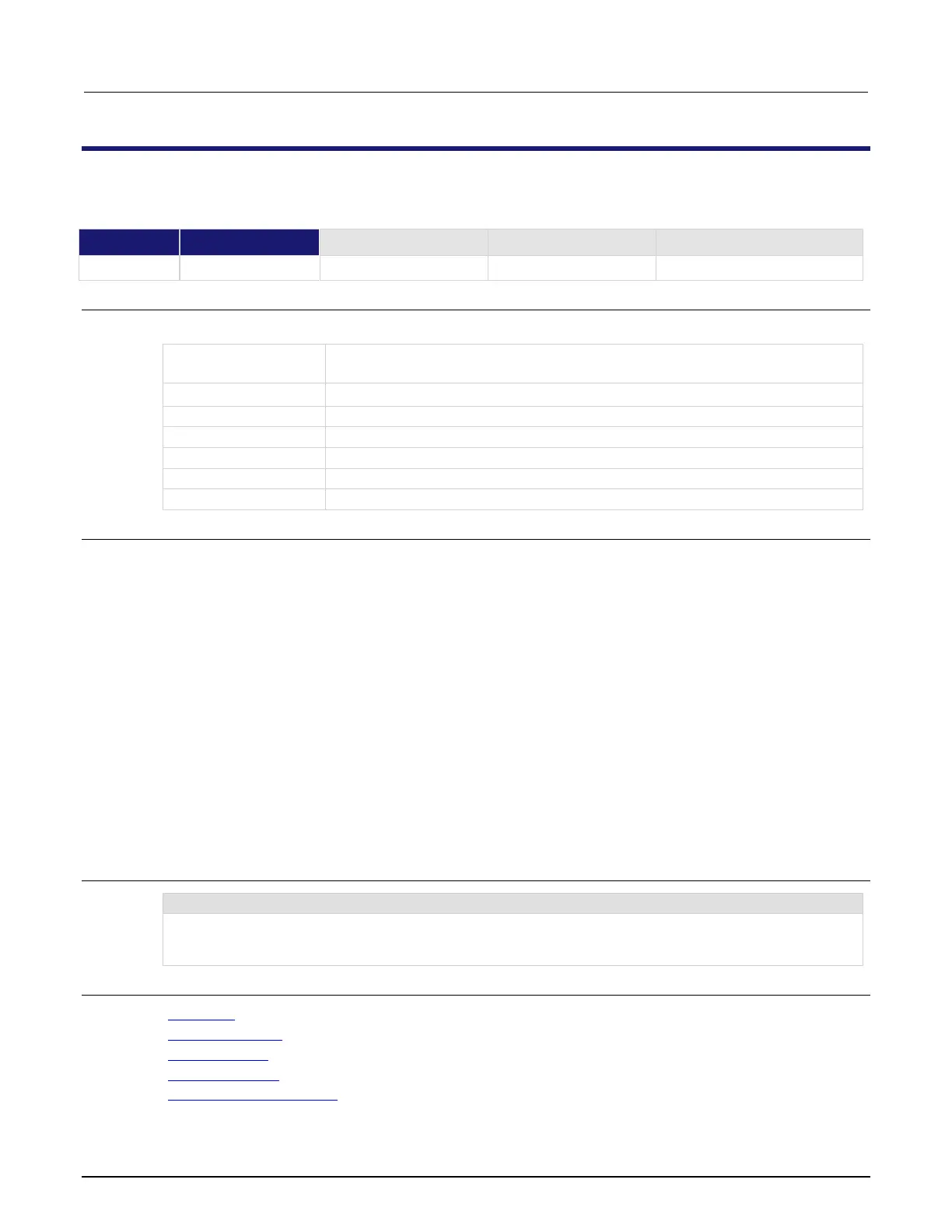Series 2600B System SourceMeter® instrument Reference Manual Section 9: TSP command reference
2600BS-901-01 Rev. F/August 2021 9-239
smuX.source.calibrateY()
This function generates and activates new source calibration constants.
Usage
smuX.source.calibrateY(range, cp1Expected, cp1Reference, cp2Expected, cp2Reference)
Source-measure unit (SMU) channel (for example, smua.source.calibratev()
applies to SMU channel A)
SMU source function (v = voltage, i = current)
The measurement range to adjust
The source value set for point 1
The reference measurement for point 1 as measured externally
The source value set for point 2
The reference measurement for point 2 as measured externally
Details
This function generates and activates new calibration constants for the given range.
The positive and negative polarities of the source must be adjusted separately. Use a positive value
for range to adjust the positive polarity and a negative value for range to adjust the negative polarity.
Do not use 0.0 for a negative point; 0.0 is considered to be a positive number.
Typically, the two points that are used are near zero for point 1 and 90% of full scale for point 2. Full
scale for point 2 should be avoided if the source of the SMU is substantially out of calibration.
The two reference measurements must be made with the source using the active calibration set. For
example, source a value, measure it, and do not change the active calibration set before issuing
this command.
The new calibration constants are activated immediately but they are not written to nonvolatile
memory. Use the smuX.cal.save() function to save the new constants to nonvolatile memory. The
active calibration constants stay in effect until the instrument is power cycled or a calibration set is
loaded from nonvolatile memory with the smuX.cal.restore() function.
This function is only available when calibration is unlocked using smuX.cal.unlock().
Example
smua.source.calibratev(1, 1e-10, 1e-5, 0.9, 0.903)
Generates and activates new source calibration constants for the 1 A range. For point 1, it uses 1e−10 as the
source value and 1e−5 as the reference measurement. For point 2, it uses 0.9 for the source value and 0.903
for the reference measurement.
Also see
Calibration (on page 10-1)
smuX.cal.restore() (on page 9-206)
smuX.cal.save() (on page 9-207)
smuX.cal.unlock() (on page 9-209)
smuX.measure.calibrateY() (on page 9-219)

